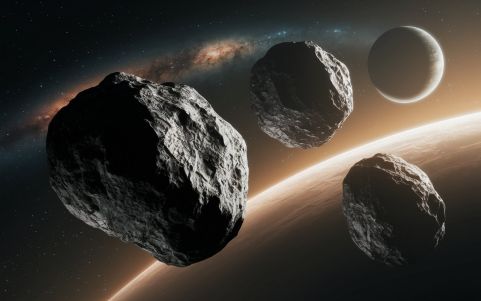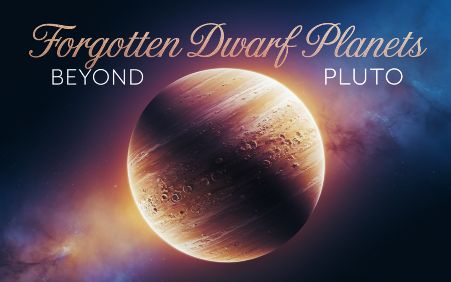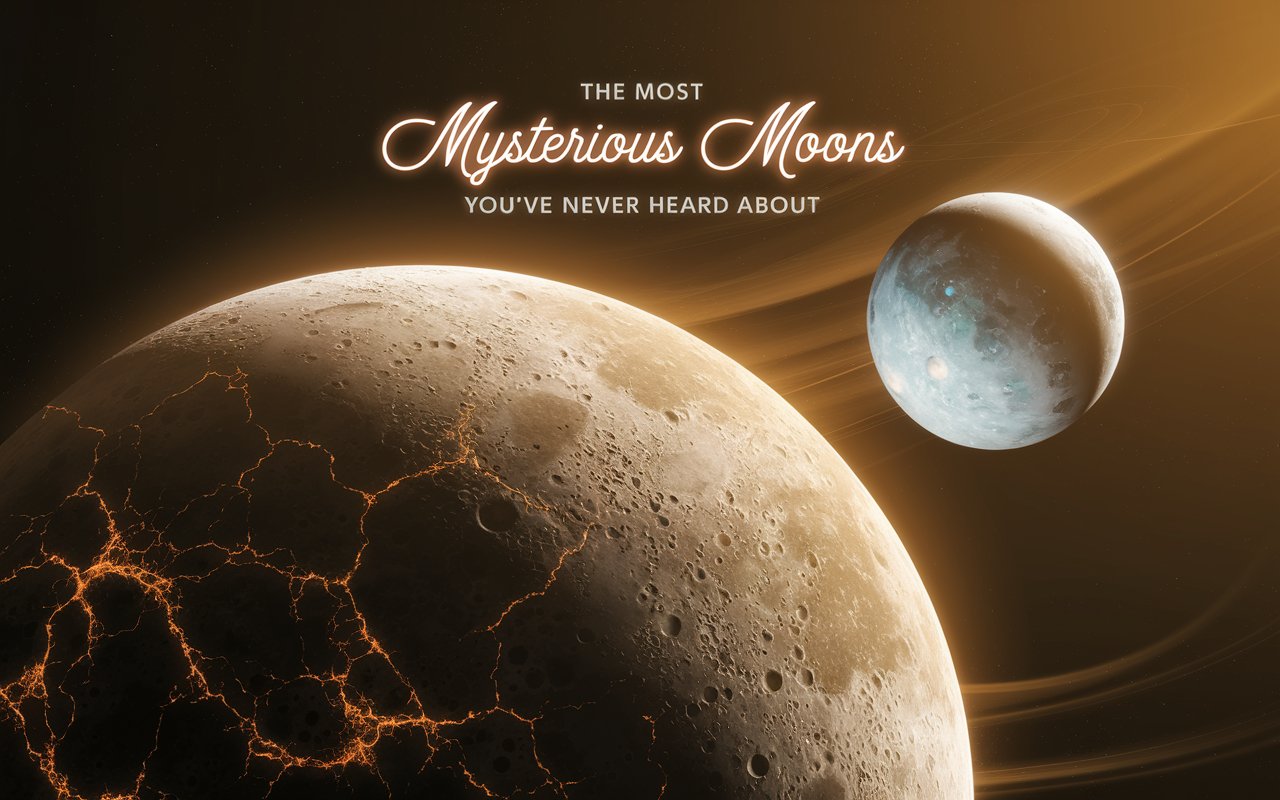Introduction to the Darkest Asteroids
The darkest asteroids in our solar system stay hidden in the vast blackness of space. They absorb most of the sunlight that strikes them. These space rocks reflect almost no light. This makes them harder to detect than brighter ones. Most dark asteroids have a surface reflectivity below five percent.
The darkest asteroids in our solar system belong to a group called C-type asteroids. These bodies formed billions of years ago. They are rich in carbon and other ancient materials. Scientists study these objects to learn about the early days of our solar system.
Some of the darkest asteroids in our solar system may contain organic molecules. These molecules are important because they help explain the building blocks of life. That makes these asteroids a key part of space research.
What Makes These Asteroids So Dark
The Role of Carbon in Asteroid Darkness
The darkest asteroids in our solar system are dark because they contain carbon. Carbon-based compounds absorb light very well. That means very little light gets reflected back into space. As a result these asteroids look like shadows against the stars.
Their low albedo makes them harder to find with traditional telescopes. Infrared detectors work better for locating the darkest asteroids in our solar system. These sensors can detect heat rather than light. That makes it easier to track dark bodies in space.
The material on these asteroids has not changed much since the solar system formed. That gives researchers a look at very old cosmic material.
Chemical Composition of Dark Asteroids
The darkest asteroids in our solar system often contain clay silicates. They also include carbonates and sulfides. These minerals form in low temperature environments. This helps scientists understand where and how the asteroids formed.
These asteroids usually hold water-bearing minerals too. That means they may have once had liquid water. Some even have traces of amino acids. That increases interest in them for astrobiology.
The darkest asteroids in our solar system often show signs of primitive solar dust. That dust contains clues about space before planets existed.
Albedo and Reflectivity
The darkest asteroids in our solar system have very low albedo. Albedo means how much light an object reflects. For comparison the Moon reflects about twelve percent of sunlight. Some dark asteroids reflect less than three percent.
Such low reflectivity makes dark asteroids look like empty space. They only become visible through special tools. Scientists use radar and thermal imaging to find and study them.
Understanding their albedo helps predict asteroid paths. It also helps with mission planning and possible mining operations.
Where Are These Dark Asteroids Found
Location in the Asteroid Belt
The darkest asteroids in our solar system mostly live in the outer asteroid belt. This region lies between Mars and Jupiter. C-type asteroids dominate this area. These dark bodies orbit the Sun at a great distance.
This part of space receives less sunlight. That means ice and dark carbon compounds stay preserved longer. The outer belt holds some of the oldest material in the solar system.
Studying the darkest asteroids in our solar system helps scientists map the structure of the belt. It also helps trace the movement of early solar system matter.
Near-Earth Dark Asteroids
Some of the darkest asteroids in our solar system pass near Earth. These are called Near-Earth Objects. Although most are small they can still pose a danger if they hit our planet.
These dark bodies are harder to track than bright ones. That makes them riskier. New detection methods now focus on infrared scans. These help locate even the darkest asteroids in our solar system.
NASA and other space groups monitor these objects. They want to create early warning systems for possible impact threats.
Dark Asteroids in the Kuiper Belt
Beyond Neptune lies the Kuiper Belt. This region may also hold some of the darkest asteroids in our solar system. These objects are mixed with icy bodies and dwarf planets.
Most Kuiper Belt objects reflect little sunlight. They may contain complex carbon molecules and ices. Studying these distant objects adds to our knowledge of dark bodies in space.
Space missions have just started exploring this area. Future missions may find even more of the darkest asteroids in our solar system in this distant zone.
Famous Dark Asteroids
Bennu and the OSIRIS-REx Mission
One of the darkest asteroids in our solar system is Bennu. NASA’s OSIRIS-REx mission visited Bennu in 2018. The spacecraft collected samples and returned them to Earth in 2023.
Bennu has a very low albedo. It reflects just over four percent of sunlight. The mission found organic molecules and hydrated minerals on its surface.
These discoveries make Bennu an important example of the darkest asteroids in our solar system. Scientists now study the samples in labs on Earth.
Ryugu and the Hayabusa2 Mission
Japan’s Hayabusa2 visited asteroid Ryugu. This is another of the darkest asteroids in our solar system. The mission returned samples in 2020.
Ryugu is rich in carbon compounds. It has a similar reflectivity to Bennu. The mission also found amino acids in the sample. That makes Ryugu a subject of high interest.
Ryugu shows that the darkest asteroids in our solar system may carry life-building chemicals. These findings change how we view the formation of life.
Other Notable Dark Asteroids
Other dark bodies include asteroid 253 Mathilde and 101955 Bennu. These are both classified as C-type. Mathilde was visited by the NEAR Shoemaker spacecraft in 1997.
These missions provide vital data about the darkest asteroids in our solar system. Scientists continue to study these objects to solve cosmic mysteries.
Importance of Studying Dark Asteroids
Clues to the Solar System’s Past
The darkest asteroids in our solar system hold unaltered material from the early days of the Sun. These materials are older than Earth itself.
These space rocks give insight into the chemical makeup of the early solar nebula. This helps scientists understand how planets and moons formed.
The darkest asteroids in our solar system preserve ancient secrets. These secrets can only be found by careful study.
Possible Sources of Life’s Building Blocks
Dark asteroids may have delivered organic material to Earth. Some researchers believe these materials helped spark early life.
This theory suggests the darkest asteroids in our solar system may have played a role in Earth’s history. If true these bodies are not just rocks. They are cosmic messengers.
More missions are now focused on sample return. This allows scientists to study fragile organic compounds in great detail.
Future Space Mining Opportunities
The darkest asteroids in our solar system may also become targets for mining. They contain water and valuable minerals.
Water from asteroids can be used to make rocket fuel. This could help support long-term missions in space. Mining dark asteroids may reduce the need to launch everything from Earth.
This creates a new frontier for commercial space companies. They see the darkest asteroids in our solar system as resources for future exploration.
Pros and Cons of Studying Dark Asteroids
| Pros | Cons |
|---|---|
| Rich in carbon and organic molecules | Hard to detect due to low reflectivity |
| Preserve early solar system material | Sample return missions are expensive |
| May hold clues to the origin of life | Require advanced technology for study |
| Useful for future space mining | Pose risk if near Earth and undetected |
| Help us understand asteroid belt structure | Limited public awareness and support |
Frequently Asked Questions
What makes dark asteroids so hard to see
The darkest asteroids in our solar system reflect very little light. This makes them hard to spot with normal telescopes.
Are dark asteroids dangerous to Earth
Yes some may pass close to Earth. Because they are hard to detect they may pose an impact risk if not tracked early.
Do dark asteroids contain water
Yes many of the darkest asteroids in our solar system contain water-bearing minerals. This makes them targets for future missions.
Can dark asteroids help us understand life’s origin
Yes they may carry organic molecules. These could have seeded early Earth with the building blocks of life.
Why do scientists focus on dark asteroids
The darkest asteroids in our solar system preserve old materials. These help researchers learn about the early solar system.
Conclusion
The darkest asteroids in our solar system may not shine bright but they hold deep secrets. They are time capsules from the beginning of the solar system. Their carbon-rich makeup reveals vital clues about our past. They may even help explain how life began.
Missions to these dark objects bring back rare samples. These samples tell stories of ancient space dust and cosmic chemistry. As technology improves more dark asteroids will be explored.
Understanding the darkest asteroids in our solar system opens new paths. It leads to discoveries in science industry and even survival. These shadowy travelers may light the way forward in space exploration.





